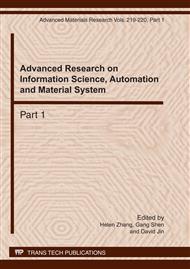p.727
p.732
p.736
p.742
p.746
p.750
p.754
p.762
p.766
Application for Fiber Bragg Grating Sensor in Internal Force Testing of Lining Structure
Abstract:
In order to know about the change of concrete stress and internal forces during the construction period of one highway tunnel, to evaluate the safety of lining structure, to take precautions against early diseases and to avoid loss in result of structural instability, linear arrays of fiber Bragg grating sensor in series were used for continuous monitoring typical lining cross section based on wavelength division multiplex. A mass of initial data was acquired. Furthermore, internal forces and early concrete stress of lining were analyzed according to time stress curve and internal force diagram. It has been found that fiber Bragg grating is highly adaptable to tunnel environment and the test method is of high accuracy. Therefore, the method discussed in this paper can be used for field test of tunnel structure extensively.
Info:
Periodical:
Pages:
746-749
Citation:
Online since:
March 2011
Authors:
Price:
Сopyright:
© 2011 Trans Tech Publications Ltd. All Rights Reserved
Share:
Citation:


